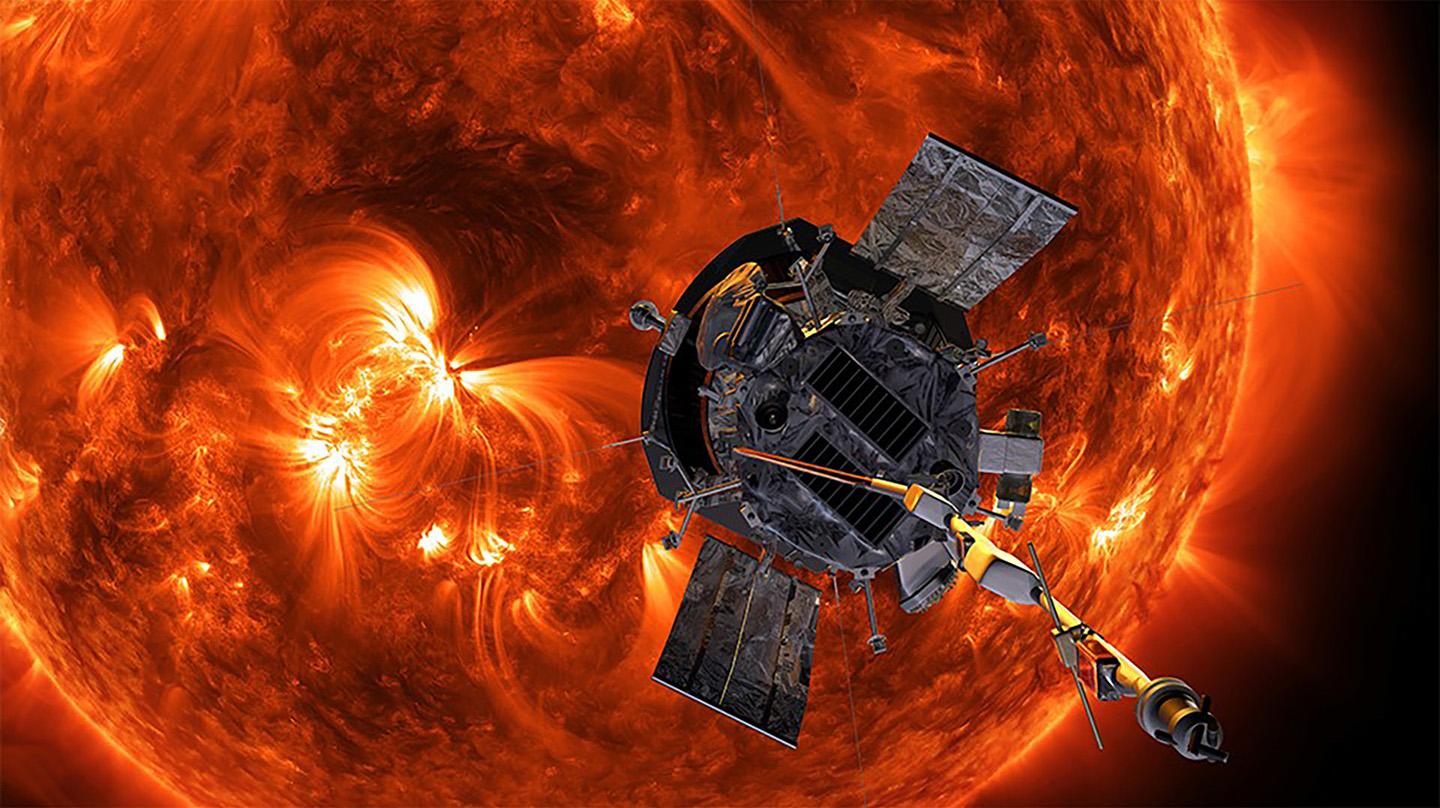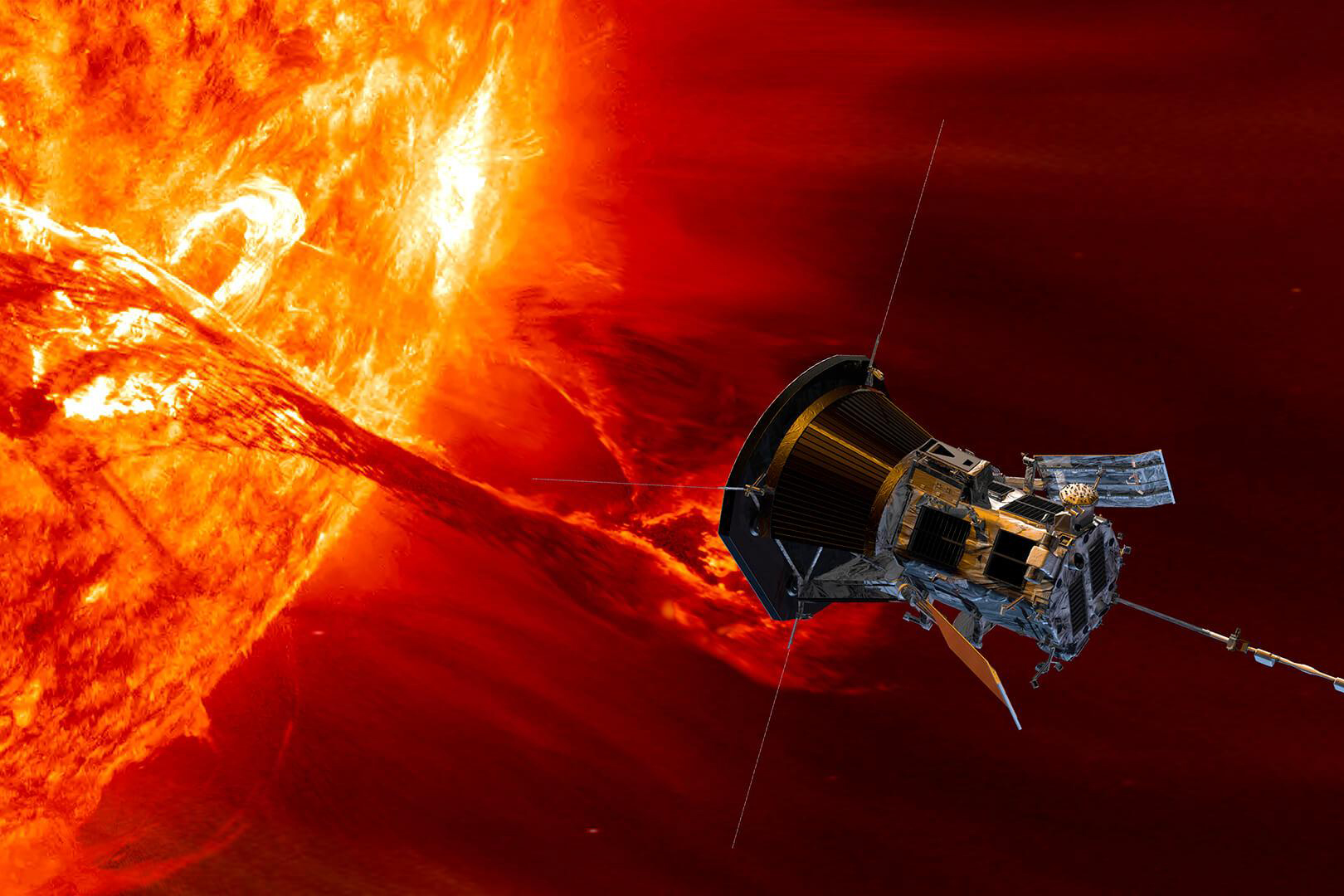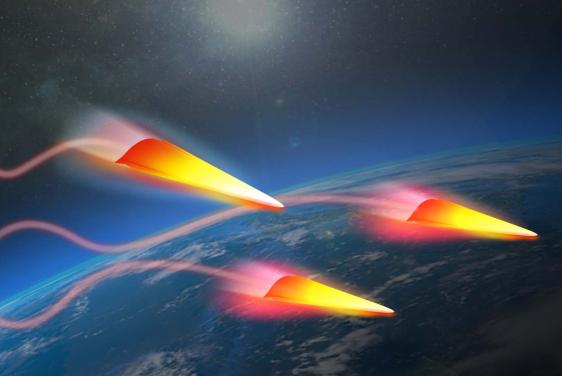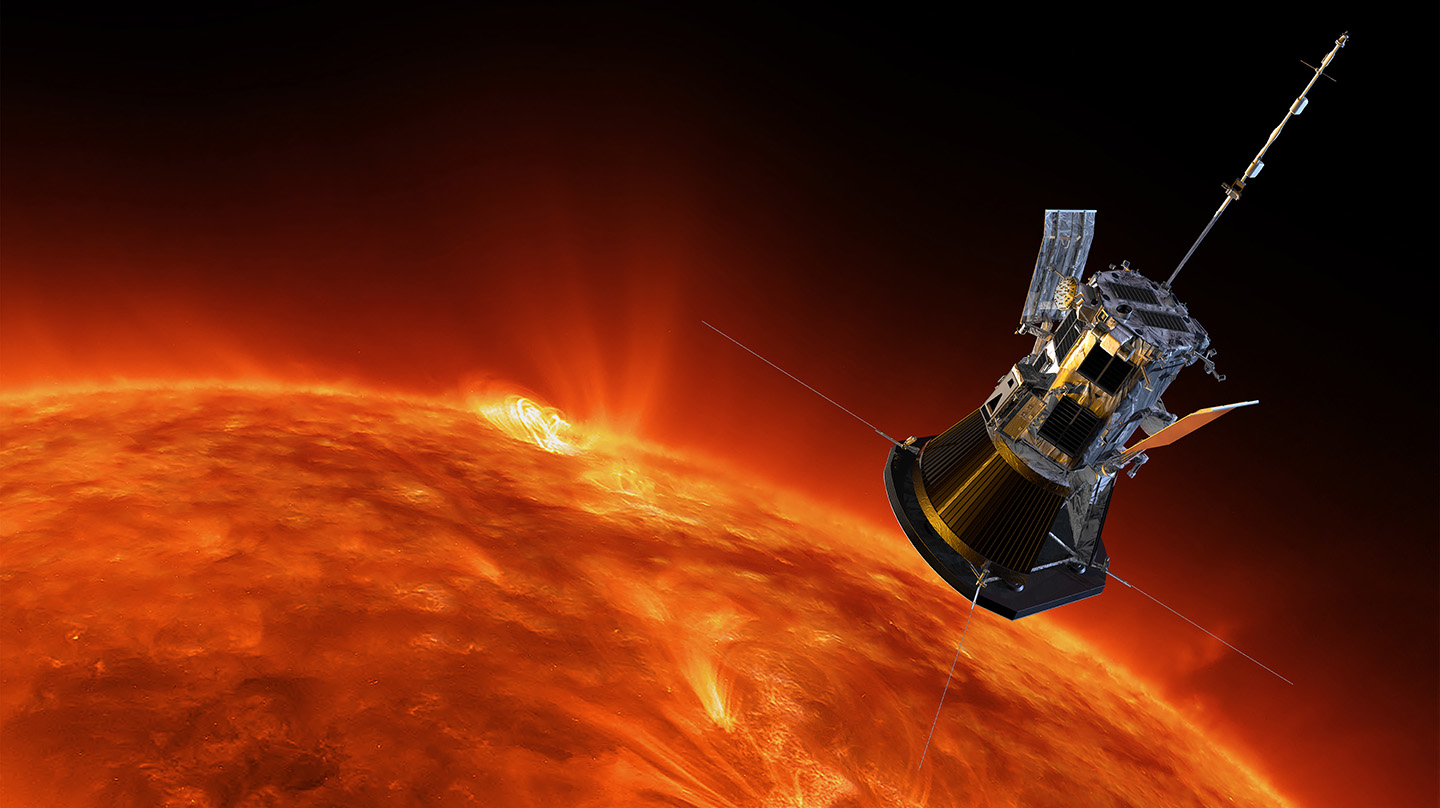Press Release
Parker Solar Probe Team Wins 2024 Collier Trophy
The innovative team of engineers and scientists from NASA, the Johns Hopkins Applied Physics Laboratory (APL) and more than 40 other partner organizations across the country that created the revolutionary Parker Solar Probe has been awarded the 2024 Robert J. Collier Trophy by the National Aeronautic Association (NAA). This prestigious annual award recognizes the most exceptional achievement in aeronautics and astronautics in America with respect to improving the performance, efficiency and safety of air or space vehicles in the previous year.
On December 24, 2024, Parker Solar Probe passed deep within the Sun’s corona, just 3.8 million miles (6.1 million kilometers) above the Sun’s surface and at a top speed of close to 430,000 mph (692,000 kph), ushering in a new era of scientific discovery and space exploration.
“Congratulations to the entire Parker Solar Probe team for this well-earned recognition,” said NASA acting Administrator Janet Petro. “This mission’s trailblazing research is rewriting the textbooks on solar science by going to a place no human-made object has ever been and advancing NASA’s efforts to better understand our solar system and the Sun’s influence, with lasting benefits for us all. As the first to touch the Sun and fastest human-made object ever built, Parker Solar Probe is a testament to human ingenuity and discovery.”
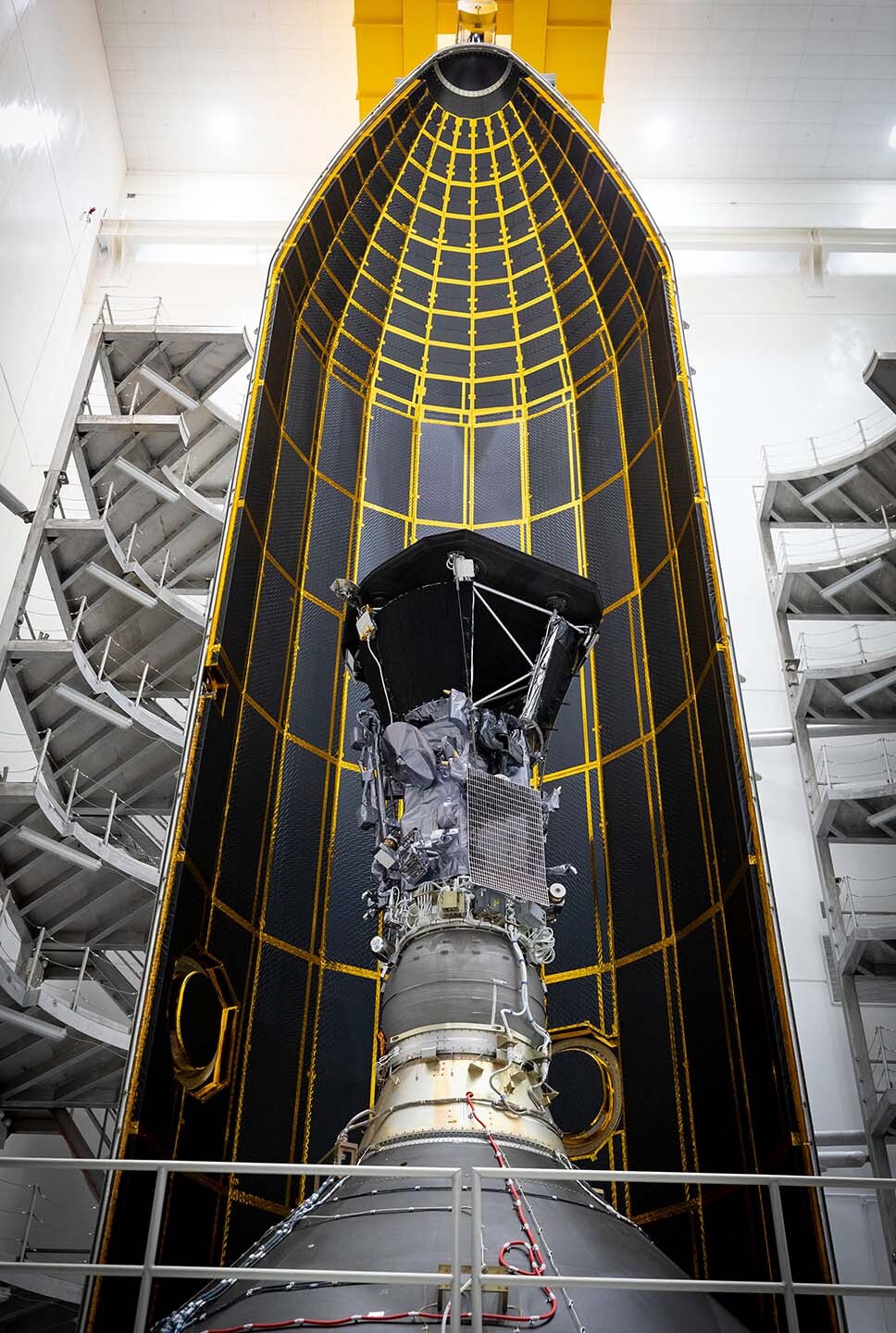
Credit: NASA/Johns Hopkins APL/Ed Whitman
“The pioneering technology advances that the Parker Solar Probe team have demonstrated are truly remarkable,” said Johns Hopkins President Ron Daniels. “Traveling three times closer to the Sun and seven times faster than any spacecraft before it, Parker Solar Probe enabled humanity to reach inside the Sun’s atmosphere for the first time, rewriting the textbooks on solar processes and space weather. I know that everyone at APL and across our entire Johns Hopkins community shares my immense pride in the research impact of this exceptional team.”
Three novel aerospace technology advancements were critical to enabling this record performance: The first is the thermal protection system (TPS), or heat shield, that protects the spacecraft and is built to withstand brutal temperatures as high as 2,500 degrees Fahrenheit (1,371 degrees Celsius). The TPS allows Parker’s electronics and instruments to operate at close to room temperature, and this breakthrough, developed jointly by APL and the Johns Hopkins Whiting School of Engineering, has been further evolved to enable recent U.S. developments in hypersonic defense technology.
“This amazing team brought to life an incredibly difficult space science mission that had been studied, and determined to be impossible, for more than 60 years. They did so by solving numerous long-standing technology challenges and dramatically advancing our nation’s astronautics and spaceflight capabilities,” said APL Director Ralph Semmel. “The Collier Trophy is well-earned recognition for this phenomenal group of innovators from NASA, APL, and our industry and research partners from across the nation.”
Additional Parker innovations included first-of-a-kind actively cooled solar arrays that protect themselves from overexposure to intense solar energy while powering the spacecraft, and a fully autonomous spacecraft system that can manage its own flight behavior, orientation and configuration for months at a time. Parker has relied on all of these vital technologies every day since its launch almost seven years ago, in August 2018.
Parker’s observations of solar events, such as flares and coronal mass ejections, are critical to advancing our understanding of the science of our Sun and the phenomena that drive high-energy space weather events that pose risks to satellites, air travel, astronauts and even power grids on Earth. Understanding the fundamental physics of space weather also enables more reliable prediction of astronaut safety during future deep-space missions to the Moon and Mars.
And under the direction of Project Scientist Nour Rawafi and Project Manager Helene Winters, the Parker mission team at APL and collaborating institutions continues to efficiently operate the spacecraft and collect data in one of the solar system’s harshest environments.
“The Collier Trophy is a recognition like no other in the world,” said NAA President and CEO Amy Spowart. “As the oldest aviation organization in the U.S., the NAA’s Collier Trophy remains the most prestigious and sought-after in the industry. The Parker Solar Probe team’s achievement in earning the 2024 Collier is a shining example of determination, genius and teamwork. It’s a distinct honor for the NAA to acknowledge and celebrate the remarkable team that turned the impossible into reality.”
First awarded in 1911, the Robert J. Collier Trophy winner is selected by a distinguished group of aviation leaders chosen by the NAA. The Collier Trophy, considered to be the most prized of all national aeronautical and astronautical honors, is housed in the Smithsonian’s National Air and Space Museum in Washington, D.C.
